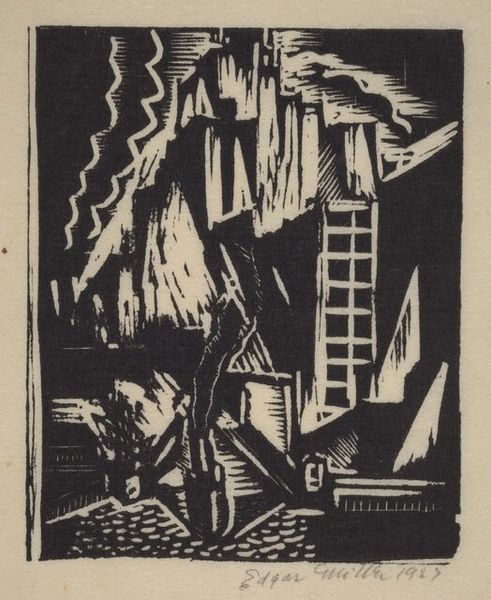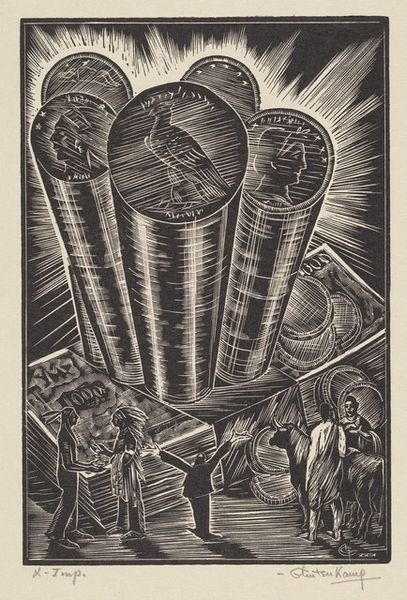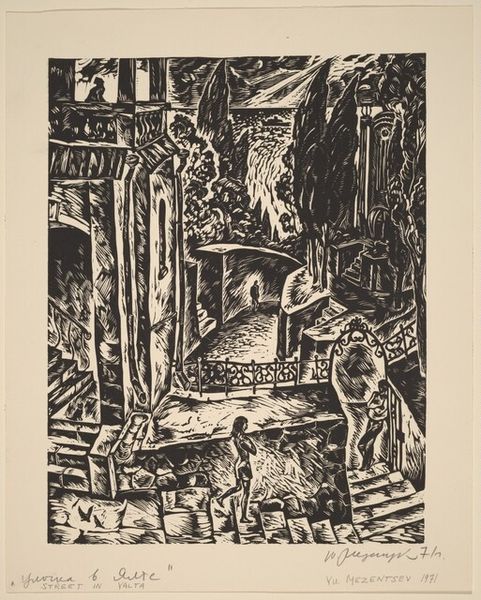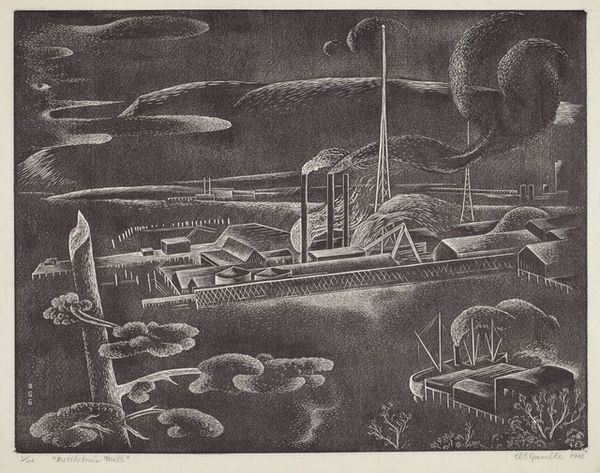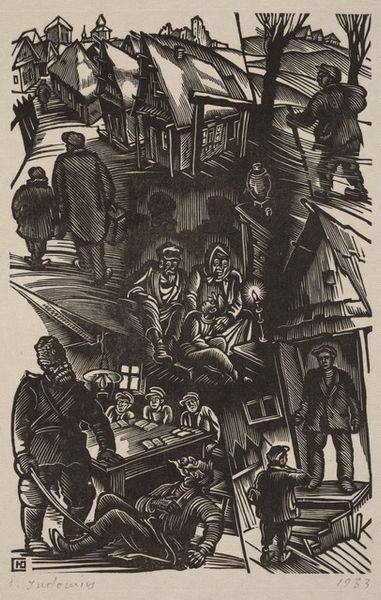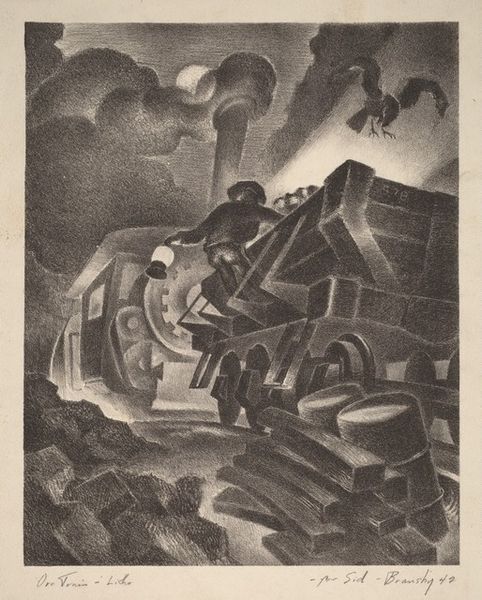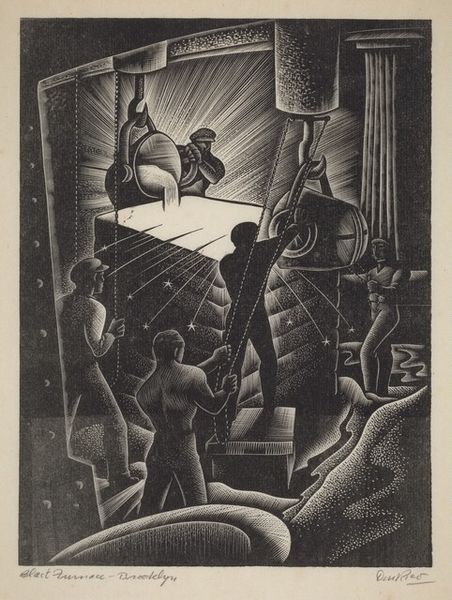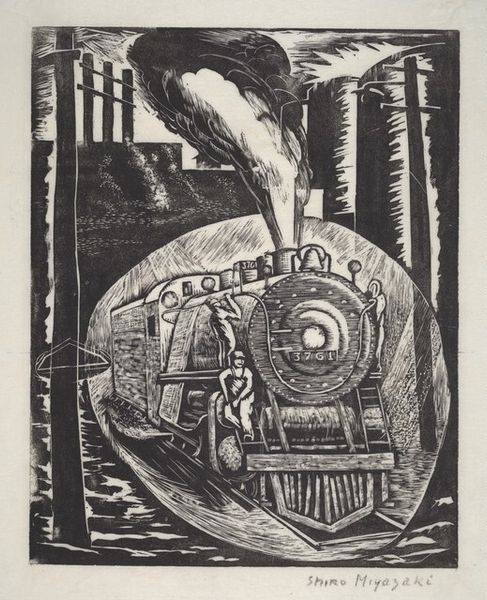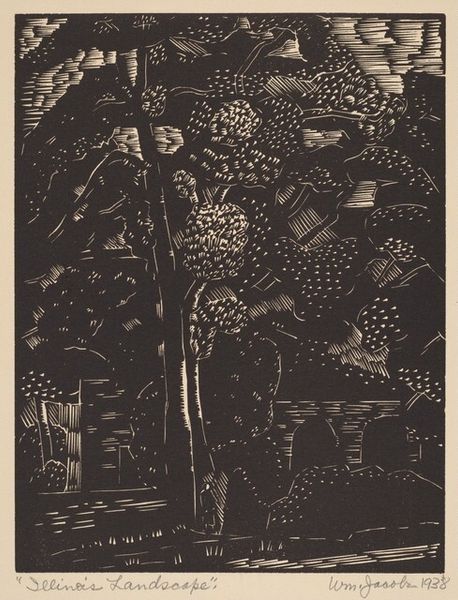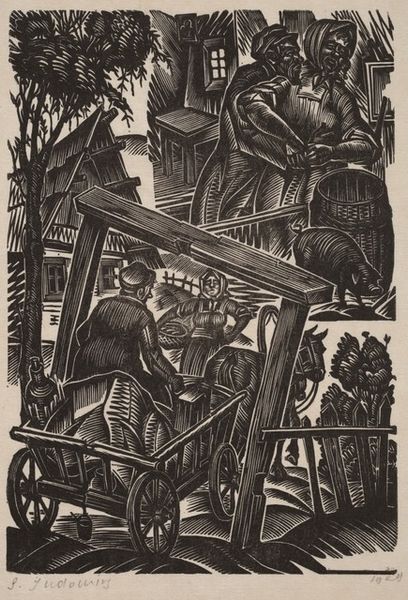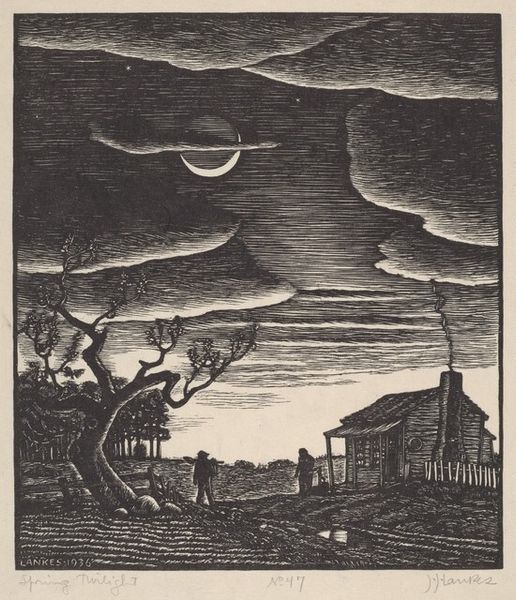
graphic-art, print, woodcut
#
graphic-art
#
narrative-art
# print
#
geometric
#
expressionism
#
woodcut
#
line
#
cityscape
#
modernism
Dimensions: Image: 166 x 111 mm Sheet: 231 x 202 mm
Copyright: National Gallery of Art: CC0 1.0
Curator: Okay, let’s discuss Henry J. Glintenkamp's woodcut print, "Weapons," circa 1929. Editor: Looking at "Weapons," I’m struck by its intense, almost frantic energy. The contrast between light and shadow is so stark. What jumps out at you in this piece? Curator: As a materialist, I’m interested in what the print's stark black and white reveals about the social and economic context in which it was made. Woodcut as a medium lends itself to mass production. What does the image of planes bombing a city, coupled with the print medium, tell us about anxieties of the interwar period and the looming threat of industrialized warfare, widely distributed? Editor: So you’re saying the choice of woodcut, making it reproducible, emphasizes the pervasiveness of the anxieties and perhaps the industrialization of war itself? The print could act as a kind of... warning? Curator: Precisely. And note the cityscape; the industrial forms mirrored, if not consumed by, the instruments of war. Do you see any interplay between human labor and technology, in the woodcut's portrayal? The controller with the machinery within their working environment contrasts the warfare happening elsewhere, how can you read their relationship? Editor: I do. It seems that humans have almost become another part of the machine, extensions of the weaponry. Is it perhaps about distancing people from violence? Is this about control versus chaos, of humans playing god from afar? Curator: Consider also the consumption of images of war. Who would buy this print? What does owning such an image signify? What conversations might it start within a domestic sphere? Editor: That's a side I hadn't considered! Thanks, this opens new interpretations of how mass-produced images participate in shaping public perception, and can make previously hidden elements such as process, context, or the material’s consumption more visible. Curator: Indeed, understanding art requires recognizing these considerations surrounding production and reception. There’s more to explore within this single print that relates it to modern narratives and history.
Comments
No comments
Be the first to comment and join the conversation on the ultimate creative platform.
